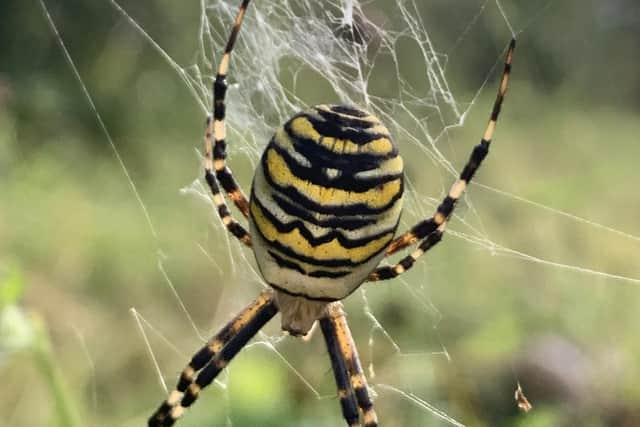Rare wasp spider spotted setting up home in Rugby nature reserve
and live on Freeview channel 276
Volunteers from Rugby Wildlife carrying out conservation work at Ashlawn Cutting found a rare wasp spider spinning its web.
The nature reserve on the former Great Central Railway line has become a thriving habitat for flora and fauna, but the discovery was the first time a wasp spider had been spotted at the cutting.
Advertisement
Hide AdAdvertisement
Hide AdA large spider with striking yellow and black stripes, the wasp spider arrived in the UK from continental Europe, with the majority of sightings recorded in southern England.


The only other reported sighting of a wasp spider in Rugby was at the Rainsbrook Valley's Diamond Wood, planted by Rugby Borough Council to mark the diamond jubilee of Her Majesty Queen Elizabeth II.
Another rare species was discovered at Newbold Quarry Nature Reserve.Rugby Wildlife volunteers found a number of closely knit ivy bee nests - known as an aggregation - housing thousands of the pollinators.
Ivy bees nest underground and, as the name suggests, the species focuses on collecting pollen from ivy, which flowers in the autumn.
Advertisement
Hide AdAdvertisement
Hide AdSimilar in appearance to the honey bee, the first reported sighting of ivy bees in the UK came at the turn of the millennium in Dorset.Since then, the species has spread northwards but September's sighting at Newbold Quarry marks the first confirmed report in Rugby since 2014.Rugby Borough Council manages both Newbold Quarry and Ashlawn Cutting in partnership with Warwickshire Wildlife Trust.Volunteers from Rugby Wildlife support the trust by carrying out conservation work at the nature reserves.
Tom Kittendorf, Rugby Borough Council chief officer for leisure and wellbeing, said: "The discoveries of a wasp spider and an aggregation of ivy bees were a real reward for the hard work of the volunteers from Rugby Wildlife, whose enthusiasm and dedication makes such a massive difference to our environment."
Steve Wright, a Rugby Wildlife volunteer, said: "Monitoring species on our reserves is critical to creating the habitats they need to encourage biodiversity."
